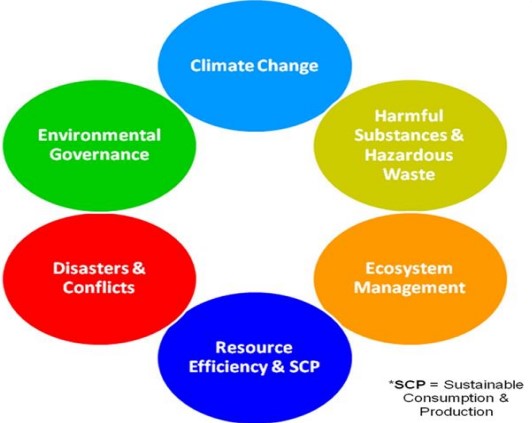Who Supply, Who Use? – How Sustainable Water Supply can be Achieved in Langcang-Mekong River.
Main Article Content
บทคัดย่อ
This study addresses a topic that has received limited attention in supply chain research: water supply. While industrial supply chain studies have typically focused on the supply of raw materials and downstream product pathways, the supply of water has been largely overlooked, likely due to the perception that water is an inexhaustible resource provided by nature. However, the Lancang-Mekong Basin presents an opportunity to rethink the definition of supply chains, and to consider how to ensure the stable and equitable use of natural resources, including water, in order to create greater value for all water users throughout the industrial development process. The Lancang-Mekong River Basin is the largest river basin in Southeast Asia, and it is shared by several countries, including China, Laos, Myanmar, Thailand, Cambodia, and Vietnam. This paper provides an overview of the current status of water supply and use in the Lancang-Mekong River Basin and highlights the importance of water use for the future industrial development of the coastal countries. Finally, the paper proposes a preliminary framework for managing water resources from a supply chain management perspective. The proposed framework is intended to promote sustainable development and informed water management practices in the region.
Article Details

อนุญาตภายใต้เงื่อนไข Creative Commons Attribution-NonCommercial-NoDerivatives 4.0 International License.
บทความนี้ได้รับการเผยแพร่ภายใต้สัญญาอนุญาต Creative Commons Attribution-NonCommercial-NoDerivatives 4.0 International (CC BY-NC-ND 4.0) ซึ่งอนุญาตให้ผู้อื่นสามารถแชร์บทความได้โดยให้เครดิตผู้เขียนและห้ามนำไปใช้เพื่อการค้าหรือดัดแปลง หากต้องการใช้งานซ้ำในลักษณะอื่น ๆ หรือการเผยแพร่ซ้ำ จำเป็นต้องได้รับอนุญาตจากวารสารเอกสารอ้างอิง
Basist, A., & Williams, C. (2020). Mekong River Wetness Anomalies in the 2019 Monsoon Season. Eyes on Earth. BBC. (2018, August 14). China’s Geopolitical Power and the Mekong Ecological Holocaust [Chinese version].
BBC. Beech, H. (2020, April 14). China Builds Dams to Restrict the Flow of the Upper Mekong River, Causing Drought in Many Countries Downstream [Chinese version]. New York Times.
Bonnema, M., & Hossain, F. (2019). Assessing the potential of the surface water and ocean topography mission for reservoir monitoring in the Mekong River Basin. Water Resources Research, 55(1), 444-461.
Bowen, G. A. (2009). Document Analysis as a Qualitative Research Method. Qualitative Research Journal, 19(2), 27-40.
Campbell, I. (Ed.). (2009). The Mekong Biophysical Environment of an International River Basin. Elsevier. Doquese. (2020, June 4). Floods Caused ‘Dam Refuges’ on Mekong Riverbanks. Medium.
Eyler, B., & Weatherby, C. (2020). April 13). New Evidence: How China Turned off the Tap on the Mekong River. The Stimson Center.
Godoy, O. (2019). Coexistence theory as a tool to understand biological invasion in species interaction networks: Implications for the study of novel ecosystems. Functional Ecology, 33(7), 1190-1199.
Grunwald, R. (2020). Lancang Mekong Cooperation: Present and Future of the Mekong River Basin. Journal for Political Science, Modern History, INT. REL., Secur Stud, 23(2), 69-86.
Grünwald, R. (2021). Lancang-Mekong Cooperation: Overcoming the Trust Deficit on the Mekong.
Hecht, J. S., Lacombe, G., Arias, M. E., Dang, T. D., & Piman, T. (2019). Hydropower dams of the Mekong River basin: A review of their hydrological impacts. Journal of Hydrology, 568, 285-300.
Hung, T. (2020, April 14). The Latest Research shows that the Dam Construction of China in Mekong River Basin has influenced 60 million population lack of water.
Newtalk. Kailu. (2010). Analysis: The Lancang Dam and the Mekong. Drought Inspiration [BBC article.]
Middleton, C., & Devlaeminck, D. J. (2021). Reciprocity in practice: the hydropolitics of equitable and reasonable utilization in the Lancang-Mekong basin. International Environmental Agreements: Politics, Law and Economics, 21, 235-253.
NCDR. (2021). Global Disaster Even Book- 2018 Saddle Dam D Collapse Information.
Ouyang, S. (2016, March 16). Vietnam Requests China for Releasing Water from Dam? The Situation in Lancang (Mekong) River Basin.
KKnews. Rafaeli, S., & Raban, D. (2005). Information Sharing Online: A research challenge. International Journal of Knowledge and Learning, 1(1/2), 62-77.
Reuters. (2020, August 24). China Pledge Mekong River Data-sharing, Details Unclear.
Reuters. Stimson (2021). Mekong Dam Monitor, Asia & Indo-Pacific. https://www.stimson.org/project/mekong-dam-monitor/ The News
Lens. (2020, April 15). The Dam Construction of China occurs drought in Indochina Peninsula. The water level of lower Mekong river reached the lowest level in the past 50 years.
Tiezzi, S. (2020, August 25). China, Southeast Asia Leaders Meet to Discuss the Mekong’s Plight. The Diplomat. Tsai, M. (2020, June 19). Dam, dam, dam! Then the Mekong River Disappears? Discussion about ‘International Water Law’. Crossing.


